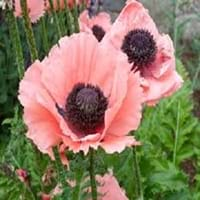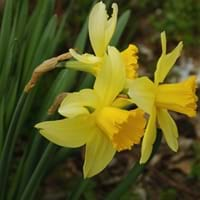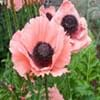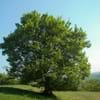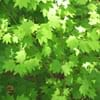Life Span
Perennial
Perennial
Type
Tender Perennial
Bulb
Origin
Western Asia
Asia, Central Asia, Eastern Asia, Southwest Europe
Types
Not Available
Accent, Acropolls, Cassata,Dellbes, Flower parade, Hawera
Number of Varieties
Not Available
Habitat
Lake margins, Lake Sides, Temperate Regions
Hillside, Open scrub, River side, Rocky areas, Scrubs, Woods
USDA Hardiness Zone
3-9
3-9
Sunset Zone
A1, A2, A3, 1a, 1b, 2a, 2b, 3a, 3b, 4, 5, 6, 7, 8, 9, 10, 11, 14, 15, 16, 17, 18, 19, 20, 21
A2, A3, 1a, 1b, 2a, 2b, 3a, 3b, 4, 5, 6, 7, 8, 9, 10, 11, 12, 13, 14, 15, 16, 17, 18, 19, 20, 21, 22, 23, 24
Habit
Upright/Erect
Clump-Forming
Flower Color
Light Pink
Ivory, Lemon yellow, Peach, White, Yellow, Yellow green
Flower Color Modifier
Bicolor
Bicolor
Fruit Color
Not Available
Not Available
Leaf Color in Spring
Green, Gray Green, Dark Green
Green
Leaf Color in Summer
Not Available
Green
Leaf Color in Fall
Green, Gray Green, Dark Green
Green
Leaf Color in Winter
Not Available
Green
Leaf Shape
Aristate
Linear
Plant Season
Spring, Summer
All year
Sunlight
Full Sun, Partial Sun
Part sun
Growth Rate
Medium
Medium
Type of Soil
Loam
Clay, Loamy, Sandy
The pH of Soil
Acidic, Neutral, Alkaline
Acidic
Soil Drainage
Well drained
Well drained
Bloom Time
Late Spring, Early Summer
Early Spring, Late Spring, Spring
Tolerances
Not Available
Black Walnut Toxicity
Where to Plant?
Container, Ground, Pot
Ground
How to Plant?
root cutting
From bulbs
Plant Maintenance
Medium
Medium
Watering Requirements
Keep the Soil well drained
It cannot sustain wet-feet, Keep the ground moist but not water-logged, Water Deeply, Water when soil is dry
In Summer
Lots of watering
Lots of watering
In Spring
Moderate
Moderate
In Winter
Average Water
Average Water
Soil pH
Acidic, Neutral, Alkaline
Acidic
Soil Type
Loam
Clay, Loamy, Sandy
Soil Drainage Capacity
Well drained
Well drained
Sun Exposure
Full Sun, Partial Sun
Part sun
Pruning
Cut away fading foliage, Prune after flowering, Remove damaged leaves, Remove dead branches, Remove dead leaves
Cut or pinch the stems, Prune to control growth, Remove dead leaves, Remove dead or diseased plant parts
Fertilizers
10-52-17 after germination, All-Purpose Liquid Fertilizer
All-Purpose Liquid Fertilizer
Pests and Diseases
Pests and diseases free, Red blotch
Basal rot, Crown rot, Fire, Leaf spot, Scorch, Viruses
Plant Tolerance
Deer resistant, Drought
Drought
Flower Petal Number
Single
Single, Double
Foliage Texture
Medium
Medium
Foliage Sheen
Matte
Matte
Attracts
Not Available
Not Available
Allergy
Skin irritation
Asthma, Rhinoconjunctivitis
Aesthetic Uses
along a porch, deck or patio, Beautification, Borders, Cottage Garden, Mixed Border, small hedge
Showy Purposes
Beauty Benefits
Not Available
Not Available
Edible Uses
Not Available
No
Environmental Uses
Air purification, Deer resistant
Air purification
Medicinal Uses
Not Available
Asthma, Cold, Cough, Vomiting
Part of Plant Used
Flowers, Whole plant
Flowers, Leaves
Other Uses
Beneficial species for attracting pollinators, Showy Purposes
Showy Purposes
Used As Indoor Plant
No
No
Used As Outdoor Plant
Yes
Yes
Garden Design
Feature Plant, Mixed Border
Not Available
Botanical Name
PAPAVER orientale 'Carneum'
Narcissus
Common Name
Oriental Poppy, Pink Oriental Poppy
Daffodil
In Hindi
ओरिएंटल पोस्ता
हलका पीला
In German
Türkischer Mohn
Narzisse
In French
pavot oriental
Jonquille
In Spanish
amapola oriental
Narciso
In Greek
oriental poppy
ασφόδελος
In Portuguese
papoila oriental
Abrótea
In Polish
orientalne maku
żonkil
In Latin
oriental poppy
Asphodelus
Phylum
Angiosperms
Magnoliophyta
Class
Magnoliopsida
Liliopsida
Order
Ranunculales
Asparagales
Family
Papaveraceae
Amaryllidaceae
Clade
Eudicots
Angiosperms, Monocots
Tribe
Not Available
Narcisseae
Subfamily
Magnolioideae
Amaryllidoideae
Season and Care of Pink Oriental Poppy and Daffodil
Season and care of Pink Oriental Poppy and Daffodil is important to know. While considering everything about Pink Oriental Poppy and Daffodil Care, growing season is an essential factor. Pink Oriental Poppy season is Spring and Summer and Daffodil season is Spring and Summer. The type of soil for Pink Oriental Poppy is Loam and for Daffodil is Clay, Loamy, Sandy while the PH of soil for Pink Oriental Poppy is Acidic, Neutral, Alkaline and for Daffodil is Acidic.
Pink Oriental Poppy and Daffodil Physical Information
Pink Oriental Poppy and Daffodil physical information is very important for comparison. Pink Oriental Poppy height is 76.20 cm and width 45.70 cm whereas Daffodil height is 1.25 cm and width 1.25 cm. The color specification of Pink Oriental Poppy and Daffodil are as follows:
Pink Oriental Poppy flower color: Light Pink
Pink Oriental Poppy leaf color: Green, Gray Green and Dark Green
Daffodil flower color: Ivory, Lemon yellow, Peach, White, Yellow and Yellow green
- Daffodil leaf color: Green
Care of Pink Oriental Poppy and Daffodil
Care of Pink Oriental Poppy and Daffodil include pruning, fertilizers, watering etc. Pink Oriental Poppy pruning is done Cut away fading foliage, Prune after flowering, Remove damaged leaves, Remove dead branches and Remove dead leaves and Daffodil pruning is done Cut or pinch the stems, Prune to control growth, Remove dead leaves and Remove dead or diseased plant parts. In summer Pink Oriental Poppy needs Lots of watering and in winter, it needs Average Water. Whereas, in summer Daffodil needs Lots of watering and in winter, it needs Average Water.
